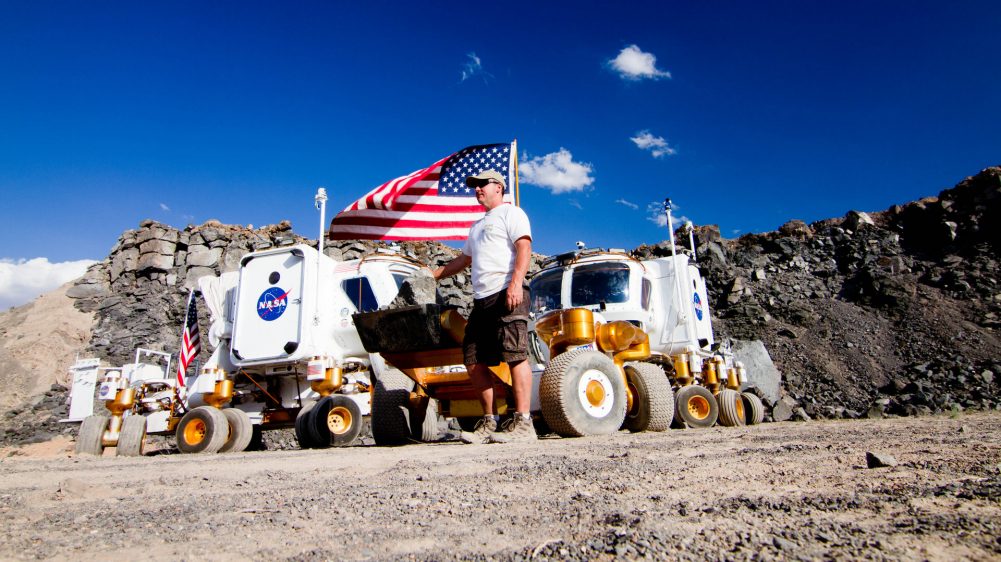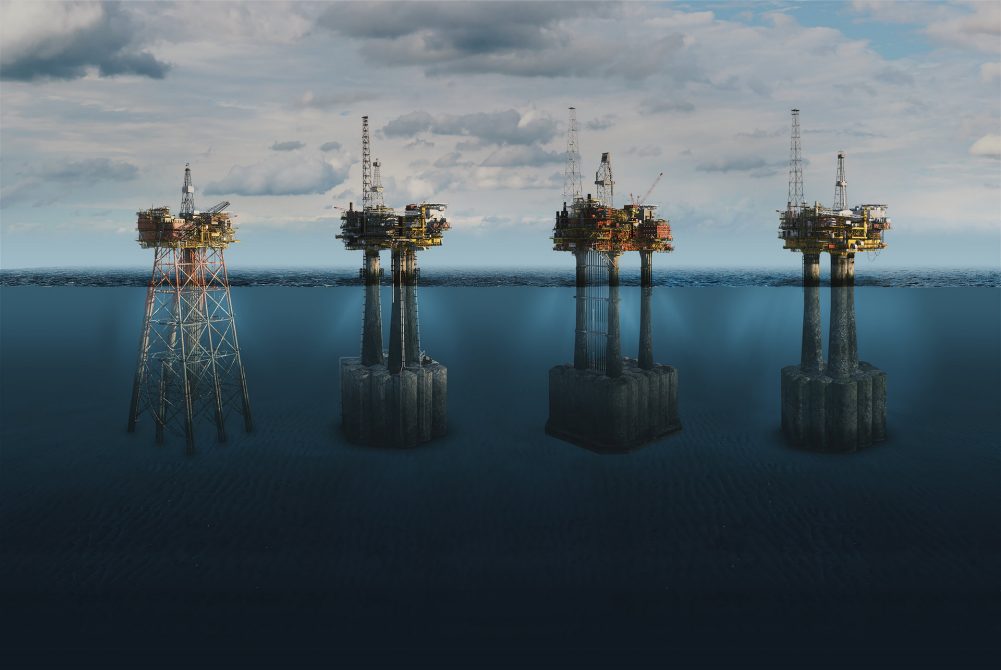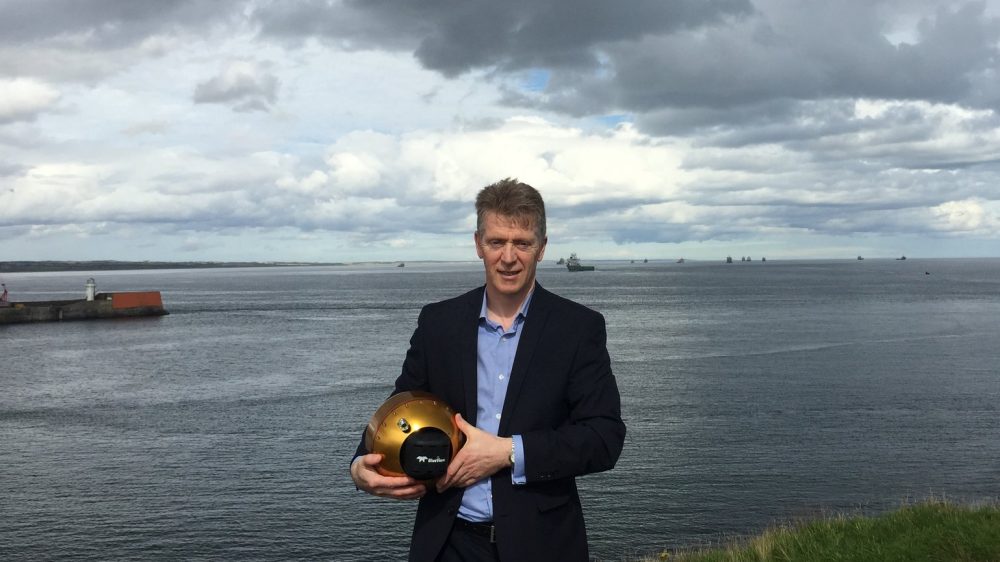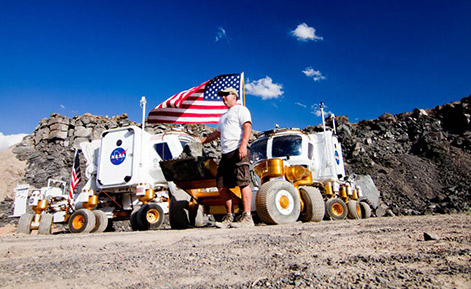It took an abandoned nuclear missile silo, a vast underwater laboratory and a lot of hard work. But the US space agency boldly went where it had never been before: the North Sea.
 Growing up just a few miles from the Johnson Space Center in Houston, USA, Darby Magruder dreamed of living in space.
Growing up just a few miles from the Johnson Space Center in Houston, USA, Darby Magruder dreamed of living in space.
He became an engineer, joined Nasa and worked alongside astronauts. But he came closest to his dream when he took some space shuttle technology and made it work, against the odds, in the cold, dark depths of the UK’s North Sea.
And it only happened because of three vast concrete structures that, for the last 40 years or so, have been providing a solid base for a trio of oil and gas platforms off the coast of Scotland.
The Shell-operated Brent Bravo, Brent Charlie and Brent Delta were put into position in the 1970s: each one weighing more than 300,000 tonnes and as tall as the Eiffel Tower.
At the bottom of the structures are 64 hollow concrete vessels that have been used to store oil and help anchor the platforms.
 With the Brent field stopping production, decisions had to be made about what to do with the structures. Shell needed to find out more about the sediment at the bottom of those vessels.
With the Brent field stopping production, decisions had to be made about what to do with the structures. Shell needed to find out more about the sediment at the bottom of those vessels.
“There was a plan to drill through the top of the vessels,” remembers Roddy MacFarlane, who works on Shell’s Brent decommissioning team, “but they are at the bottom of the sea and are made of metre-thick reinforced concrete. Drilling through was going to be difficult and risky.”
A group of Shell staff who meet in their own time to hunt out solutions to the company’s biggest challenges – the Hunters Network – thought Nasa might have the expertise to send a probe through the existing 10-inch network of pipes.
And that’s where Magruder came in.
“As soon as Shell told me the challenge I thought about our AERCam – something we invented to float around the Space Shuttle to inspect it without having to do spacewalks,” says Magruder, who is Deputy Chief of Robotic Systems Technology at the Johnson Space Center.
He took time away from some of his Nasa projects – which include building humanoid robots to set up a base on Mars – and got to work making a bowling ball-sized scanning device that could get through the Brent pipes.
 Building the probe
Building the probe
It needed lights, cameras, control systems and, of course, sonar. And it had to be gold-coloured, a reference back to the Apollo missions.
Nasa built a replica of the Brent pipe system in its Neutral Buoyancy Lab – a vast swimming pool used to simulate the weightless conditions in space – to test that the Sonar Sphere prototype worked. It did.
But Magruder also wanted to see if it could scan effectively inside the vessel. So he found an abandoned US nuclear missile silo.
“One of my colleagues is a diver and he knew of this silo, which is largely flooded, in Texas,” said Magruder. “It is almost exactly the same shape and size as the Brent vessels. So we tested the probe there too.”
But despite all the preparation, the North Sea had some surprises in store. On the first attempt, the tether attached to the probe snapped. On the second, the probe got through the pipe but wouldn’t go into the vessel itself. And on the next attempt, the probe struggled to see through a layer of mixed oil and water.
The fourth attempt was different.
To get access to the pipes Magruder had to climb down inside one of the legs supporting Brent Bravo. He worked in a room 71 metres under the surface.
“We had breathing gear on and special suits, we were weighed down with so much stuff and monitoring equipment,” recalls Magruder. “The attention to safety was really strong, very similar to Nasa.
“To get into position we even had to go through a huge blast door. It was cold too. It was just like being an astronaut. I loved it.”
Once the probe got in and data started coming through, Magruder cried tears of joy.
Back on shore, MacFarlane punched the air in celebration.
The probe went on to produce a detailed map of the amount and distribution of sediment in the vessel. Another technique, developed by a separate team, was used to get a sample of the sediment so its composition could be analysed.
With the project now nearing its end, Magruder has hopes the Sonar Sphere could find yet another use: back up in space.
“We are looking at dragging an asteroid into the Moon’s orbit to investigate it,” he says. “With a little modification, the Sonar Sphere could be at the forefront of space exploration, telling us what the asteroid is made from.”
Not bad for a little gold ball.
Story by Lech Mintowt-Czyz
Source: Shell Inside Energy Stories
Brent: a short history
The Brent field, off the north-east coast of Scotland, was served by four platforms: Brent Alpha, Brent Bravo, Brent Charlie and Brent Delta.
The field was discovered in 1971 and Brent Bravo began production in 1976.
At its peak in 1982 the Brent field produced more than 500,000 barrels of oil a day: enough to meet the annual energy needs of around half Britain’s homes.
Production from the field has generated £20 billion in tax revenue for the UK.
Shell established its decommissioning project in 2006, overseen by a panel of independent scientific experts, to explore how to safely decommission the structures. The company is finalizing its proposals to the UK government ahead of a public consultation.
97% of the platforms’ “topsides” – the structures that sit on the legs and are visible above the surface – will be recycled.
The four topsides weigh 100,000 tonnes between them.
Brent Alpha is supported by a 31,500 tonne steel structure. The other three platforms stand on concrete bases, each weighing more than 300,000 tonnes.
All four platforms, if placed on the ground, would be as tall as the Eiffel Tower.


